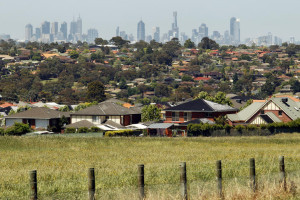Disadvantage being entrenched in the outer suburbs – studies show
Australia’s poorest urban communities, including many people recently arrived to Australia, are largely clustered in suburbs increasingly located in mid-to-outer metropolitan areas, according to new research.
The report said disadvantaged places in Melbourne, Sydney and Brisbane encompassed significant cultural diversity and fell into four socio-economically distinct types based on factors such as employment prospects, concentrations of social housing, crime, available services, and stigma.
The increased clustering of disadvantaged neighbourhoods is part of a process first identified in the 1980s, the report said, and adds to evidence of growing economic marginalisation of lower status suburbs in Australia’s major cities.
The report, titled ‘Addressing concentrations of disadvantage in urban Australia’ and commissioned by the Australian Housing and Urban Research Institute (AHURI), says the suburbanisation of socially disadvantaged is also prevalent in Europe and North
America but it has had most impact in Australia’s major cities where it is having a negative impact on the broader economy.
In Melbourne, the report identified Dandenong, Springvale, Broadmeadows, and Sunshine as disadvantaged areas – all of which have culturally diverse populations.
“As the least mobile component of the workforce has been increasingly consigned to areas remote from the inner city epicentre of the recently burgeoning ‘knowledge economy’, the economic exclusion of lower income urban Australians is likely to be compounded,” the report said.
“Alongside its acknowledged negative social and economic impacts for residents directly
impacted, there is a dawning recognition that growing spatial polarisation of our major cities
impairs overall urban productivity, thus imposing costs on all.”
It says the evolving geography of disadvantage in urban Australia reflected the power of market forces and the lack of any countervailing public policy interventions.
The report said the spatial distribution of housing-related government spending was “profoundly regressive” and that, proportionately, far greater ‘housing subsidies’ flowed to advantaged postcodes than to disadvantaged postcodes.
It highlighted the need for “city-scale strategies” to encourage growth nodes, including providing employment, public facilities and services and cultural institutions in outer suburban locations.
The report advocated for effective measures to expand and protect affordable housing in existing well-located areas and localities close to new decentralised employment centres.
Meanwhile, new data from the Australian Bureau of Statistics (ABS) shows people living on the edges of Melbourne are much less likely to move than those close to the city.
Latest migration figures show for instance that Hume, in outer northern Melbourne, at 5.5 per cent, had the state’s second-lowest departure rate in 2013-14. The rate in the Macedon Ranges was 5.9 per cent.
Whittlesea had the lowest percentage of people leaving in 2013-14, with a departure rate of 4.8 per cent.
In comparison Melbourne had a departure rate of 12.6 per cent, Port Phillip 11.1 per cent, Yarra 10.9 per cent and Maribyrnong 10.3 per cent had the state’s highest departure rates.
Laurie Nowell
AMES Australia Senior Journalist













